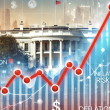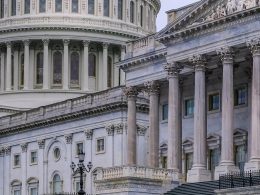Back in Black: Economy Moves to Expansion From Recovery
Liz Ann Sonders, Senior Vice President, Chief Investment Strategist, Charles Schwab & Co., Inc.
January 31, 2011
Key points
- Real GDP moves from recovery to expansion, but growth remains below potential.
- Inflation concerns globally replacing double-dip recession concerns as key theme in 2011.
- Egyptian unrest and rising volatility could further temper optimism, which could bring back the "wall of worry" the stock market likes to climb.
The economy has officially moved from recovery to expansion. For a visual, take a look at the chart below. From the point an economy bottoms, at the end of a recession, to the point it reaches its prior high, that's a "recovery." Thereafter, until the next peak, it's considered an "expansion."
Real GDP Surpasses Prior High

Click to enlarge
Source: Bureau of Economic Analysis and FactSet, as of December 31, 2010.
As you can see in the chart below, this was the longest stretch in at least 60 years for this move into expansion to occur. The good news (potentially) is that, historically, expansions have lasted at least three years.
Long Time Between Recovery and Expansion

Click to enlarge
Source: Bespoke Investment Group (B.I.G.), as of December 31, 2010.
The latest news on the economy should further put to rest the bears' theme of 2010: double-dip recession. However, the civil unrest in Egypt adds to the bears' theme of 2011: global inflation. Let's start with the economy and, later in this report, I'll move on to inflation.
Strong consumption likely to ebb this year
Real gross domestic product (GDP) was reported as initially up 3.2% in last year's fourth quarter (remember, there will be two subsequent revisions). This was light relative to the 3.5% consensus expectation, with the drop in inventory accumulation taking away 3.7 percentage points from growth.
There was a huge 7.1% surge in "real final sales," which is basically everything we buy, excluding changes in the aforementioned inventories. That jump was the highest since the second quarter of 1984. The net reading for personal consumption was 4.4%, which was the largest increase in five years.
However, to get these big jumps, the savings rate fell a bit, to 5.4% from 5.9%. That's still up sharply from its negative reading before the financial crisis erupted, but it would have been better to see a sales increase coming alongside income growth, not a reduction in the savings rate.
Real disposable incomes were only up 1.7% in the fourth quarter, and some of that was government transfer payments.
And, after a year and a half of consistent consumer debt retrenchment, consumer credit has been rising during the past two months. This is not a recipe that suggests continued robust strength in consumption.
To round out the summary of the GDP report:
- In addition to personal consumption moving to new highs, so did federal government spending (shocker, I know).
- Also back to their previous highs were business spending and exports.
- State and local government spending has been flat for the past 10 years, following a 33% increase during the 1990s.
- Net trade was a big positive last quarter, with exports up over 8% and imports down over 13% (reflecting the slowdown in inventory-building).
- Still at recession lows are private residential investment and business spending on structures (two key real-estate components).
Bifurcated economy operating below potential
The bottom line is that the manufacturing side of our economy is booming. Testament to that would be today's release of the Chicago Purchasing Managers Index, which jumped to an extremely strong reading of 68.8 on the back of strong auto sales.
On the other hand, the construction-related side of our economy is still mired in recessionary conditions. It's a bifurcated economy.
We know the overall economy continues to operate below potential. Take a look at the chart below, which makes this painfully clear.
Economy Still Operating Below Potential

Click to enlarge
Source: FactSet and Ned Davis Research, Inc. (Further distribution prohibited without prior permission. Copyright 2011 Ned Davis Research, Inc. All rights reserved.), as of December 31, 2010. Output gap = potential GDP using Congressional Budget Office estimates less actual GDP.
Headline inflation heats up with Egypt's unrest …
Lest you see little good in what I've written so far, such a large output gap will help keep a lid on core inflation. A growing concern, and partly to blame for Egypt's turmoil, is the rapid pace at which food and energy inflation is rising.
Unfortunately, it's becoming a vicious circle as the escalating civil unrest is contributing to even-higher commodity prices, especially oil, given fears of a Suez Canal closure (the route through which a lot of exported oil travels, especially bound for Europe).












